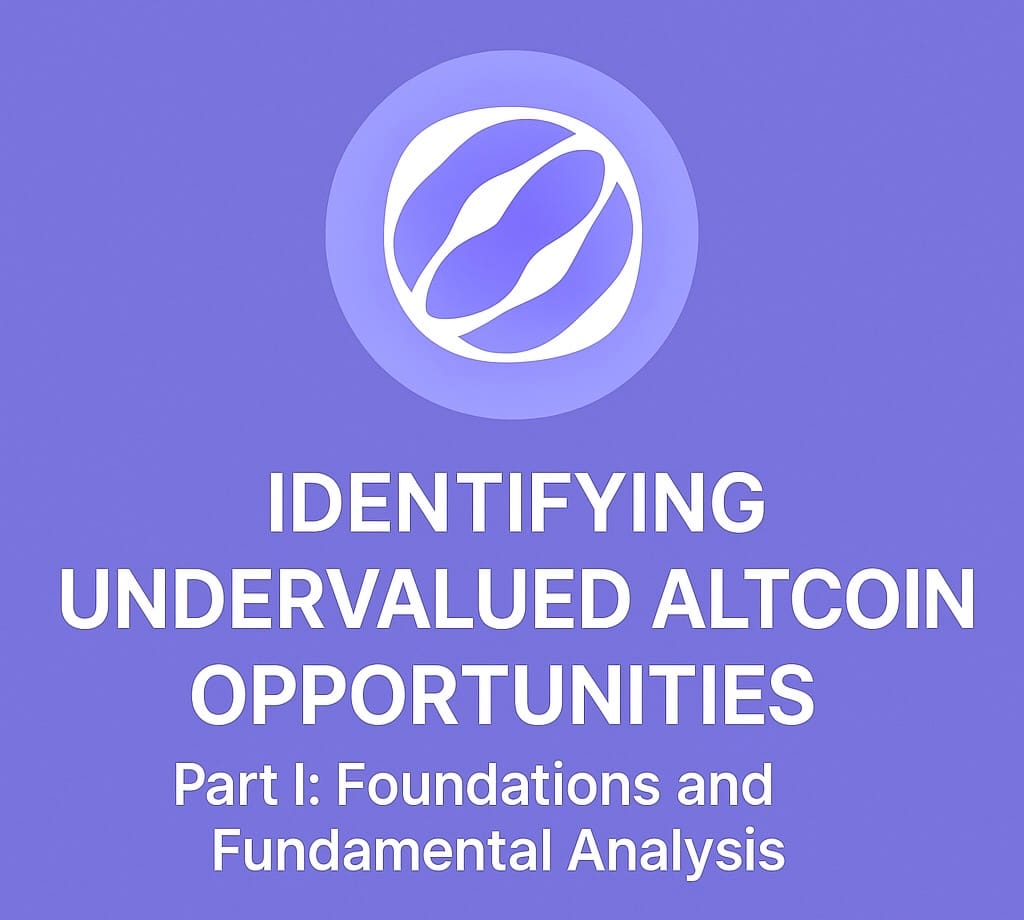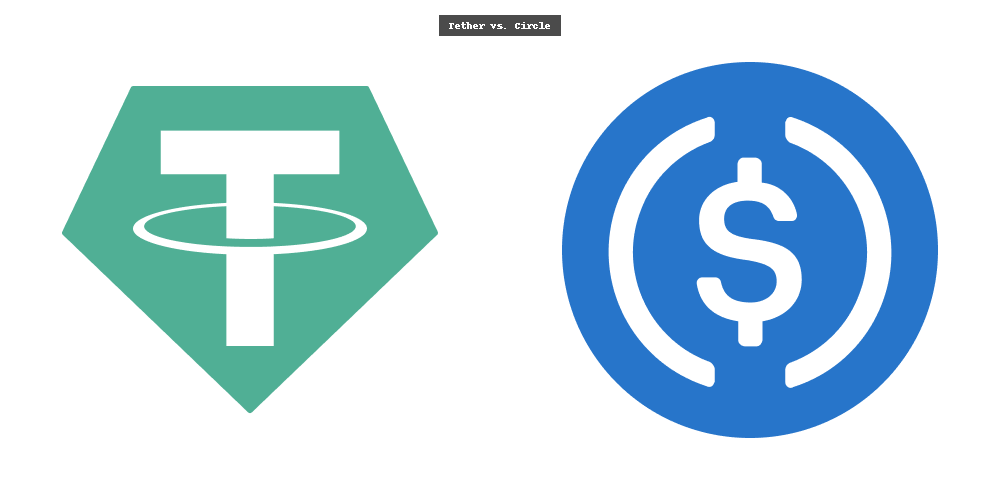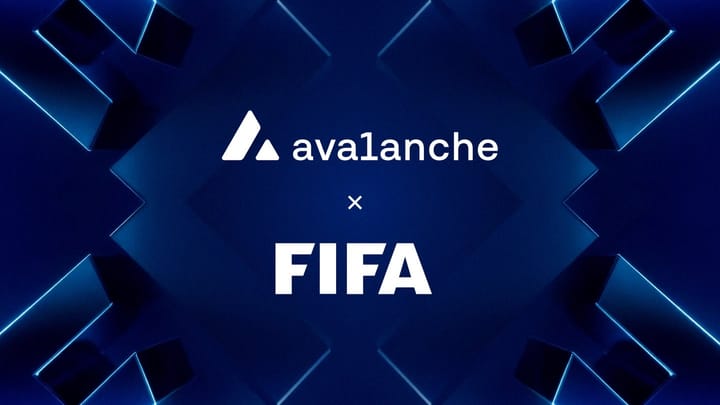Identifying Undervalued Altcoin Opportunities Part I: Foundations and Fundamental Analysis

Introduction
The cryptocurrency market is a dynamic and often volatile space, with thousands of altcoins vying for attention alongside Bitcoin and Ethereum. While some projects achieve meteoric rises, others remain undervalued, flying under the radar of mainstream investors. Identifying these undervalued altcoins—projects with strong fundamentals, innovative technology, or untapped potential, can offer significant opportunities for savvy investors. However, discovering mispriced or overlooked altcoins requires a disciplined approach, combining technical analysis, fundamental research, and market awareness.
In this article, we’ll explore proven strategies for identifying undervalued altcoin opportunities, providing actionable insights to help you navigate the complex crypto landscape.
Understanding Undervalued Altcoins
An undervalued altcoin is a cryptocurrency whose market price does not fully reflect its intrinsic value or growth potential. This mispricing can occur for various reasons, such as limited market awareness, lack of exchange listings, or broader market downturns that suppress prices across the board. Undervalued altcoins often belong to projects with strong fundamentals, including innovative technology, a capable team, and real-world use cases, yet they remain overlooked due to external factors. The goal of identifying undervalued altcoins is to uncover projects with significant upside potential before they gain widespread attention. This requires a blend of research, patience, and strategic timing. Below, I will outline key strategies for discovering these hidden gems.

Strategy 1: Conduct Deep Fundamental Analysis
Fundamental analysis is the cornerstone of identifying undervalued altcoins. It involves evaluating the intrinsic value of a project by examining its technology, team, use case, and market fit. Here’s how to approach it:
1.1 Evaluate the Project’s Technology and Use Case The first step is to understand what problem the altcoin solves and how its technology differentiates it from competitors. Ask questions like: - Does the project address a real-world problem or improve upon existing solutions? - Is the technology scalable, secure, and innovative? - Are there unique features, such as novel consensus mechanisms, interoperability, or privacy protocols?
For example, projects like Chainlink (LINK) were once undervalued because their oracle technology was not widely understood. However, as decentralized finance (DeFi) grew, Chainlink’s role in providing reliable off-chain data became indispensable, driving its value higher.
1.2 Assess the Team and Partnerships A strong team with relevant experience and a track record of execution is critical. Research the founders, developers, and advisors. - Do they have expertise in blockchain, finance, or the project’s specific industry? - Have they successfully launched projects in the past? - Are there credible partnerships with established companies or protocols?
Partnerships can signal market validation. For instance, an altcoin partnered with a major tech firm or integrated into a popular blockchain ecosystem is more likely to gain traction.
1.3 Review the Whitepaper and Roadmap The project’s whitepaper provides a blueprint of its vision, technology, and goals. A well-written whitepaper with clear objectives and technical details is a positive sign. Additionally, check the project’s roadmap to ensure it has achievable milestones and a realistic timeline for development.
1.4 Analyze Tokenomics Tokenomics—the economic structure of a cryptocurrency—plays a significant role in its long-term value. Examine:
- Total and circulating supply: A high circulating supply with low demand can suppress prices.
- Token distribution: Ensure the token isn’t overly concentrated among insiders or early investors.
- Utility: Does the token have a clear role within the ecosystem (e.g., governance, staking, or payments)?
- Inflation and deflation mechanisms: Tokens with controlled inflation or deflationary features (e.g., token burns) may hold value better. Projects with poorly designed tokenomics, such as excessive supply or lack of utility, are less likely to appreciate in value.
Strategy 2: Leverage On-Chain and Market Data On-chain data and market metrics provide insights into a project’s health and investor sentiment. By analyzing these metrics, you can identify altcoins that are undervalued relative to their activity or adoption.
2.1 Monitor On-Chain Metrics. On-chain data reflects real-time activity on a blockchain. Tools like Glassnode, Nansen, or Dune Analytics can help you analyze:
- Transaction volume: High transaction activity indicates real usage.
- Active addresses: Growing numbers of active wallets suggest increasing adoption.
- Staking or locking activity: Tokens locked in staking or liquidity pools signal long-term holder confidence.
- Developer activity: Check platforms like GitHub to see how frequently the project’s code is updated. For example, a project with growing on-chain activity but a stagnant or low market cap may be undervalued.
2.2 Compare Market Cap to Network Value The market capitalization of an altcoin should align with its network’s utility and adoption. A low market cap relative to high on-chain activity or real-world use cases can indicate undervaluation. Conversely, a high market cap with minimal activity may suggest overvaluation.
2.3 Track Exchange Listings and Trading Volume Undervalued altcoins are often listed on smaller exchanges or have low trading volume due to limited awareness. Monitor platforms like CoinGecko or CoinMarketCap to identify coins with low liquidity but strong fundamentals. A new listing on a major exchange like Binance or Coinbase can act as a catalyst for price appreciation.
Strategy 3: Identify Market Trends and Narratives The crypto market is heavily influenced by trends and narratives, such as DeFi, NFTs, or layer-2 scaling solutions. Identifying altcoins positioned to benefit from emerging trends can help you uncover undervalued opportunities.
3.1 Follow Sector-Specific Trends. Research sectors poised for growth, such as:
- Decentralized finance (DeFi): Look for protocols offering innovative lending, staking, or yield farming solutions.
- Interoperability: Projects enabling cross-chain communication, like Polkadot or Cosmos, are gaining traction.
- Web3 and the Metaverse: Altcoins tied to decentralized applications or virtual worlds may see increased demand.
- Privacy and security: Privacy-focused coins like Monero or Zcash address growing concerns about data sovereignty. For example, layer-2 scaling solutions like Arbitrum and Optimism were undervalued during their early stages but surged as Ethereum’s gas fees highlighted the need for affordable transactions.
3.2 Monitor Social Sentiment Social media platforms like X and Reddit can provide early signals of undervalued projects. Use tools like LunarCrush or Sentiment to gauge community enthusiasm and engagement. A project with growing buzz but a low market cap may be on the cusp of wider recognition. However, beware of hype-driven pumps. Cross-reference social sentiment with fundamental analysis to avoid falling for speculative bubbles.
Conclusion
Part I has laid the groundwork for identifying undervalued altcoins by emphasizing the importance of fundamental analysis. By thoroughly evaluating a project’s technology, team, partnerships, whitepaper, and tokenomics, you can uncover altcoins with strong intrinsic value that the market has yet to recognize. In Part II, we’ll explore additional strategies, including leveraging on-chain data, exploring early-stage projects, and mitigating risks, along with tools and a case study to guide your altcoin discovery journey.



Comments ()